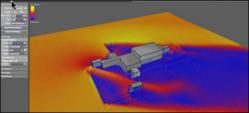CINTEP Revolutionary Shower Leads the Way for Future Bathroom Designs to Achieve the Level 3 Code for Sustainable Homes

London, UK (PRWEB) May 27, 2013
New homes in the UK are now being rated and certified according to a national standard for sustainable design and construction. The standard, known as the Code for Sustainable Homes (CSH), is measured against nine categories, two of which, energy efficiency and water consumption, have been exceptionally addressed by CINTEP. The Australian-owned and multi-award winning company recently offered up a simple solution for social housing developers and those living in publicly funded housing to meet Code level 3 — a home that is more energy- and water-efficient.
According to CINTEP, when developers and residents incorporate the company’s revolutionary recycling shower system into their bathroom designs, they will be able to deliver and experience 70 percent reduction in water and energy consumption yet zero reduction in flow rate, water temperature, and length of time spent in the shower.
The CINTEP shower system provides nine litres per minute at the showerhead but only uses 2.7 litres per minute in the process. The company also adds that on top of saving water, saving energy is derived by the fact the recirculated water will not require much heating as it is already warm.
The company explains, “The recirculated water is filtered three times and heat pasteurised in less than 25 seconds, and then immediately reused. No water is stored in the shower and no water is ever shared between users. This means we give you a shower that is high on performance, high on efficiency, but low on cost — with no compromises.”
While the UK government reiterates that the CSH is voluntary, not a regulation for private sectors that are considering their options for modern bathroom ideas, and should not be mixed up with the country’s zero carbon policy and zero carbon target by 2016, the code, however, may be enforced in instances when the local councils require developers to be code compliant, and when affordable housing funded by the Homes and Community Agency must meet Code level 3.
Code level 3, incidentally, specifies daily water consumption per person at less than 105 litres. CINTEP aims to help the average shower user consume 20 litres or less of water everyday but, says the Australian owned company, “without compromising on their enjoyment of showering.”
The recycling shower was initially invented in 2004 by Peter Brewin who was an industrial design student at the Royal College of Art in London at the time. Brewin licensed the technology to CINTEP, which further developed the revolutionary system into what it is today. The company’s website mentions that its patented technology, which is used for both commercial and residential applications, will be available in 2014 and that they are “actively seeking distributors around the world.”
CINTEP CEO Nick Christy, who co-founded the company with Brewin, weighs in on the recycling shower, indicating that using their shower is much like having power showers while still reining in energy costs and achieving Code level 3 compliance.
“Whether you’re renovating your bathroom, adding a new bathroom, or building a new house, the water recycling shower will work for you. It can be used with shower trays, over a bath, or in wetrooms, in single or multi-storey homes,” CINTEP shares.
CINTEP, with its corporate offices in the UK and Australia, designs and makes the most efficient shower systems in the world. The company has been cited numerous times by leading organisations for its innovation in the field of sustainable design, among them the prestigious James Dyson Award for the design and prototype of the recycling shower, the 2011 Green Challenge award for best business plan to reduce CO2 emissions, the British Standards Institution Environmental Design Award, and most recently, the Australian Association of Angel Investors (AAAI) as showcase winner among emerging companies.
For more details and further queries about CINTEP’s revolutionary shower system, go to the company’s website today.
Related Angel Investors Press Releases

